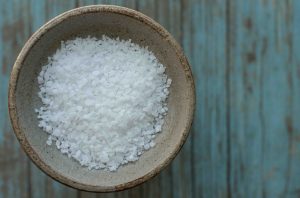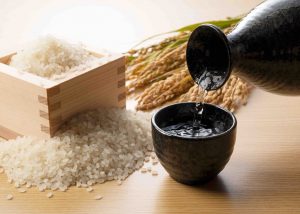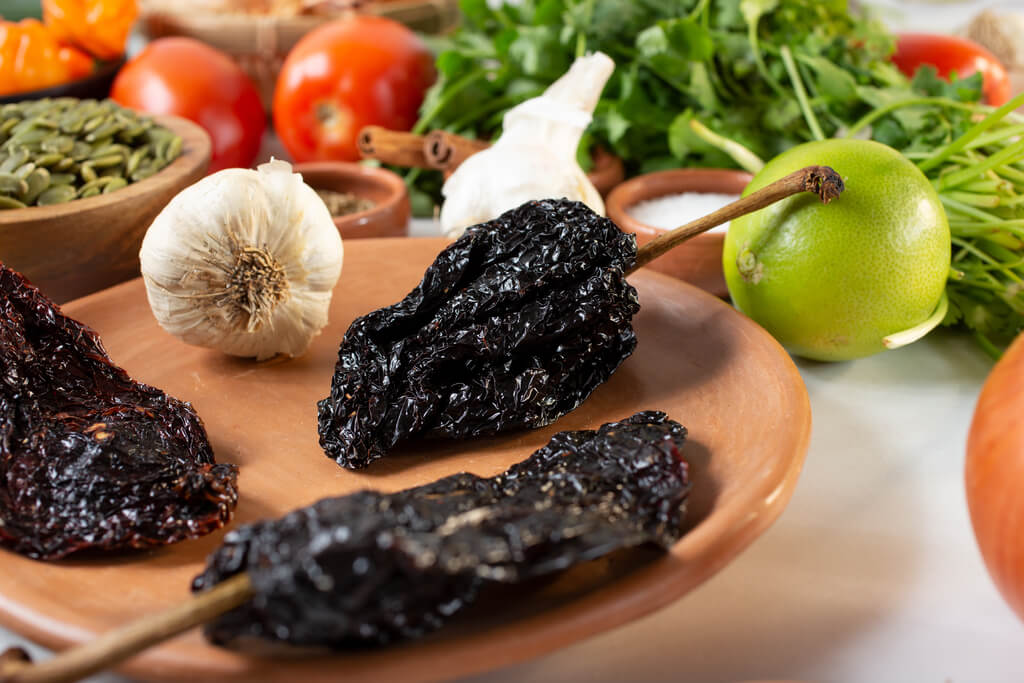
A common ingredient in Mexican and Southwestern U.S. cuisines, ancho chili is a type of dried chile pepper sold whole or in powdered form. Like scotch bonnet, this pepper is added to sauces, soups, and marinades such as adobo rojo de chiles, a sort of sauce used for chilis, enchiladas, tacos, soups, and salsas. A flavor enhancer with a slightly smoky and spicy kick, Mexican and Southwestern recipes are just incomplete without ancho chile!
If this is your first encounter with this mild pepper, then continue reading so you can get better acquainted with this spicy ingredient. We’ll show you how to use it, how it compares to other peppers, its substitutes, and some recipes to try at home!
What Is an Ancho Chile?
- Origin: Mexico
- Scoville Heat Unit: 1,000 - 1,500 SHU
- Size: 3 to 4 inches long
- Appearance: dark red, wrinkled, wide, and dried
- Flavor: sweet, smokey, slightly spicy, and chocolatey
- Uses: sauce, marinade, spice rubs, and seasoning for adobo recipes
The ancho chile (also called anchos) is simply the dried version of poblano pepper. At 3 to 4 inches long, this chile has a dark red, almost black color with a wide and sturdy heart-shaped structure. Poblano peppers in general are quite big when compared to other peppers. It is its size that gives anchos their name, with ancho translating to “wide” in Spanish.
To make anchos, you need almost ripe red poblano peppers. Generally, anchos have a rich and bold flavor and a mild heat level that gets even milder as ripening gives them a sweet and fruity taste. It also has a smoky taste because of the drying process.
That said, ancho’s flavor profile is one of the most common flavors found in Mexican cuisine. With its fruity, smoky, spicy, and sweet flavor, this pepper is unexpectedly versatile and can be used on different types of dishes as well as baked goods. It’s topped on baked potatoes, stirred into mashed potatoes, and sprinkled on top of vegetables and meats before roasting. Crushed anchos are also used to enhance the flavor of cakes and cookies. You’ll also often see it paired with other chilis like mulato, guajillos, and New Mexican chilis.
READ ALSO: 18 Best Mexican Breakfast Recipes to Kick-Start Your Mornings
Are Ancho Chiles Hot?
Ancho chile or poblano pepper’s Scoville Heat Unit (SHU) ranges between 1,000 to 1,500. In the world of chili, this is considered very mild. It sits below jalapeño (rated at about 2,500 to 8,000 SHU) and above anaheim peppers (ranging from about 500 to 2,500 SHU) on the Scoville scale.
For better comparison, the mildest is bell pepper which only rates about 0 to 100 units. Meanwhile, habanero ranges from 100,000 to 350,000. Nevertheless, you can still feel a slight spicy kick with plenty of smoky and sweet flavors.
Ancho Chile vs Mulato Chile
Unbeknownst to some, poblano peppers are used to make two types of dry chile: ancho and mulato chile. By this time, you know ancho is produced by using almost ripe poblanos, which are color red. However, mulato is made by using the fully ripe poblano pepper that is brown in color. It’s described as tasting chocolatey with hints of licorice, cherry, and even tobacco. Rating at about 2,500 to 3,000 SHU, it’s also slightly spicier than ancho pepper. That’s because the longer a pepper is allowed to ripen, the hotter they usually become.
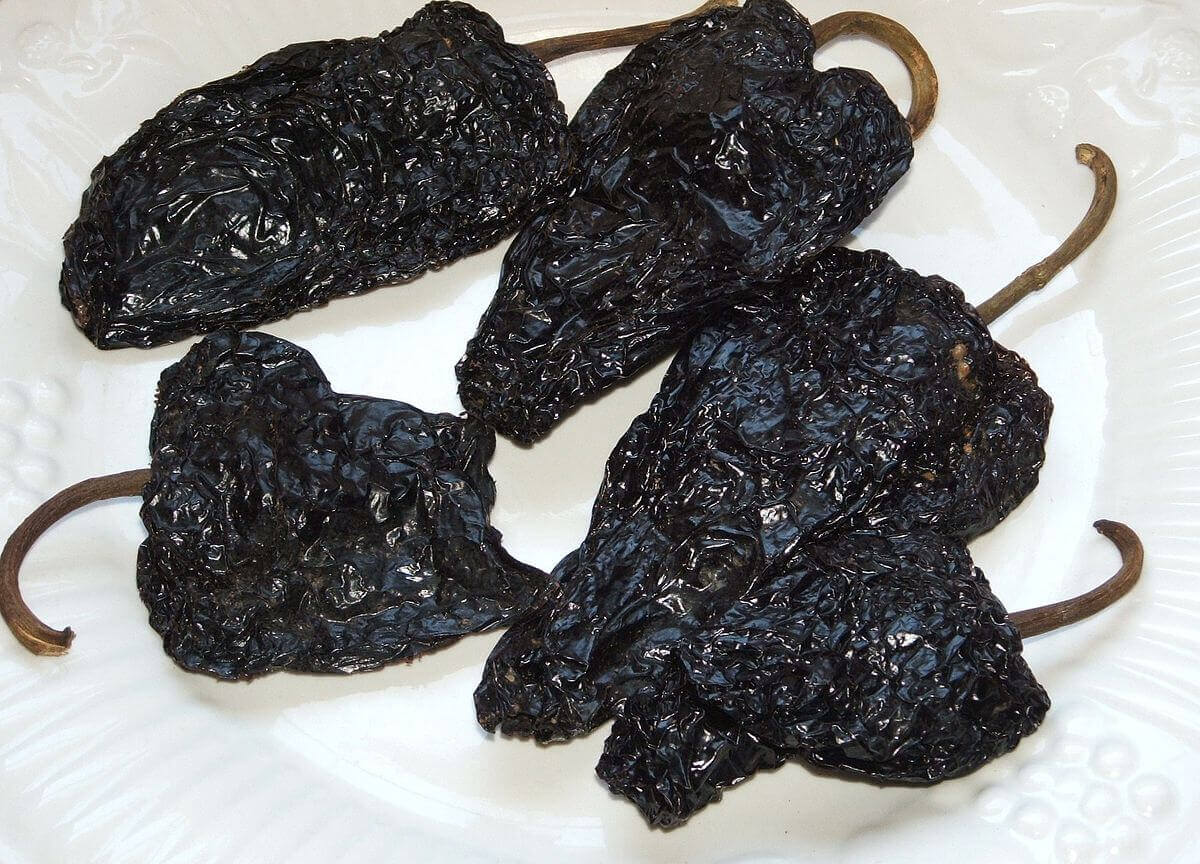
Wikimedia Commons | Glane23
Additionally, mulato and ancho (together with pasilla) are two of the Mexican holy trinity of dried peppers. These peppers are used to make the traditional Mexican mole sauce, chilis, salsas, and marinades.
How to Use Ancho Chile Pepper for Cooking
While ancho chile tastes incredibly rich and versatile, you can’t use them directly as you would other types of peppers. There are two ways to use this mild pepper: by soaking it in warm water or by grounding it in powdered form. It depends on the recipe, but you can also use it whole, crushed, dried, and reconstituted (rehydrated) to its original state. Rehydrated chile is best for ancho chile sauce, marinades, and more. Meanwhile, the powdered sort is the perfect choice for spice rubs and as a chili powder substitute.
While some chilis need to have their seeds removed, there’s no need for that in ancho as they don’t affect the spice level. But how ground or crushed your anchos are determines how heat is dispersed throughout your dish. Crumbled chile will have uneven spiciness in every bite. On the other hand, rehydrated chile that’s pureed will distribute even heat in your dish. It will also have less of a spicy kick.
Flavorful Ancho Chile Recipes to Try
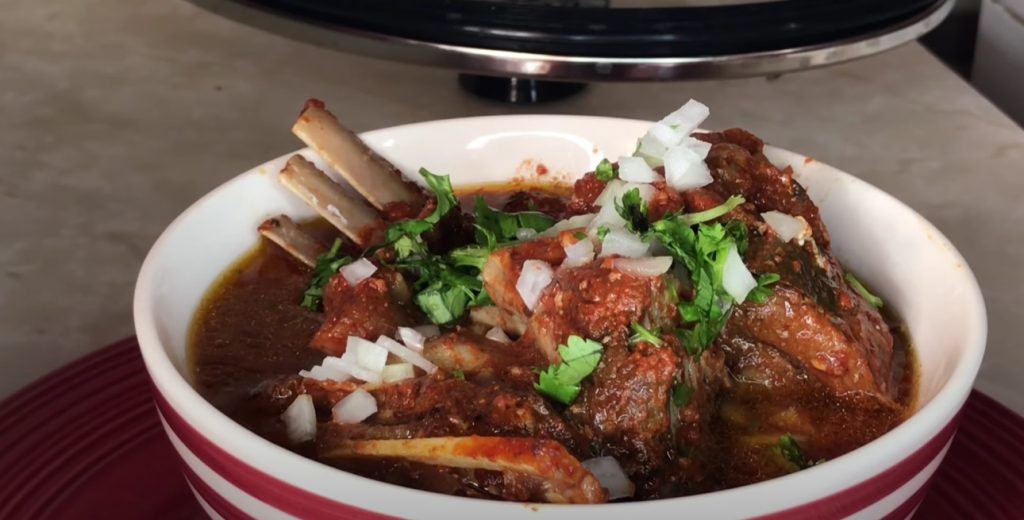
Packed with Mexican flavors, ancho is rich with a deep flavor profile that is incredibly versatile. Now that you know what ancho is and how to use it, it’s high time you learn these delicious recipes!
- Smoked Chicken Quarters – This recipe is loaded with flavorful seasonings such as ancho, cayenne, onion, and garlic powder. Perfectly seared and smoked, this recipe produces tender and juicy chicken.
- Birria De Chivo – Birria De Chivo is goat meat stew marinated in chilis and anchovy that’s slowly braised until soft and tender. It’s typically served with tortillas and sometimes beans for a filling meal.
- Carne Picada – Carne Picada is a spicy minced beef braised with spices and then encased in tortilla wraps. Top with your favorite toppings for a more personalized meal. Our tip? Start with guacamole!
- Lamb Tacos – Lamb seasoned with beer, jalapeño, and spices meld in this Mexican crowd favorite. You can eat them on their own or top them with sour cream and cilantro.
Ancho Chile Substitutes
In the middle of preparing a mouthwatering mole bowl only to find out you don’t have ancho chile? Well, don’t ditch the dish yet. Though it’s more challenging to replace it than some pepper, there are still ample and suitable substitutes to use in its place. To start, another variety of dried poblano is the best replacement: mulato chile. Again, mulato is a mild pepper similar to anchos. It has a smoky taste but with a chocolate and licorice flavor. To use it as a substitute, incorporate it into your dishes in a 1:1 ancho to mulato ratio. Pasilla chile can also work. It has an earthy flavor that is often used for mole sauces.
Aside from mulato and pasilla, another good substitute is guajillo chili. Now, there’s not much difference when we talk about ancho vs guajillo. This replacement is a bit fruitier with subtle notes of green tea and a complex smoky flavor. They’re also considered mild, ranging at about 2,500 to 5,000 SHU. Use it as you would anchos in recipes that need a mild spicy kick. Word of advice: a little goes a long way as it packs quite a lot of flavor even in small amounts.
If you’re looking for alternatives in powdered form, then suitable alternatives that are always in your pantry are chipotle powder and smoked paprika. Both alternatives have a smoky flavor that’s often associated with anchos, making both good backup ingredients.
READ ALSO: 13 Best Paprika Substitute Options You Should Be Aware Of
Where to Buy Ancho Chile
Ancho chile peppers are fairly easy to spot at grocery stores as they’re one of the famous dried chiles. The whole sort is available in bulk or large amounts in specialty spice shops and even tea shops, while the powdered form is available in bottles. You’ll usually find them in the Hispanic aisle or Mexican condiments.
If these stores don’t carry anchos, there are online retailers that you can run to. Online they are usually sold by weight and in bulk.
How to Store Ancho Chile Pepper
Anchos are best stored in a freezer container and then placed in the freezer. If you will use them right away, it’s okay to store them in the pantry or the cupboard. It’s also important to keep the air out to prevent them from completely drying out. If completely dry, they will lose their chewy and leathery texture. They could also break apart if you try to rehydrate them. For longer shelf life, keep them out of direct sunlight. Stored properly, your anchos should be okay to keep for up to a year. However, we recommend consuming them within three to six months if you want to get the full flavor.
Use Ancho Chile Pepper to Add a Mild Spicy Kick to Your Dishes
Ancho chile pepper is the ingredient responsible for some of the Mexican dishes you love. It’s used to make ancho chile sauce, mole sauce, marinades for adobo recipes, and more! If you’re not into very spicy peppers, consider using this mild chile instead. Love Mexican food? Now, that’s even more reason why your pantry needs anchos.
Was this page helpful?
Read Next: 15 Best Sriracha Substitutes You Must Try



